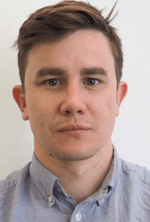Play-based exploration in the southern Cooper Basin: a systematic approach to exploration in a mature basin
D. A. Lockhart A B , E. Riel A , M. Sanders A , A. Walsh A , G. T. Cooper A and M. Allder AA Senex Energy Ltd, Level 14, 144 Edward Street, Brisbane, Qld 4000, Australia.
B Corresponding author. Email: duncan.lockhart@senexenergy.com.au
The APPEA Journal 58(2) 825-832 https://doi.org/10.1071/AJ17138
Accepted: 15 March 2018 Published: 28 May 2018
Abstract
Exploration within a mature basin poses many challenges, not least how to best utilise resources and time to maximise success and reduce cost. Play-based exploration (PBE) provides a team-based approach to combine key aspects of the petroleum system into an integrated and wholistic view of basin prospectivity. While the PBE methodology is well established, it is not often applied to its full extent on a basin scale. After a period of declining exploration success in parts of the South Australia Cooper-Eromanga Basin, this study was undertaken by a dedicated regional geoscience team with the aim of rebuilding an understanding of the basin, based on first principles and stripping away exploration paradigms.
The study area comprises an acreage position in the South Australian and Queensland Cooper-Eromanga Basins covering 70 000 km2 in which Senex Energy has 14 oil fields, has drilled more than 80 exploration wells and has acquired 2D and 3D seismic material. A plethora of proven and emerging plays exist within the acreage ranging from high productivity light sweet oil (Birkhead and Namur Reservoirs) to tight oil (Murta Formation), conventional gas (Toolachee/Epsilon and Patchawarra Formation), tight gas (Patchawarra Formation) and the emerging deep coal play (Toolachee and Patchawarra Coals).
Play-based exploration methodologies incorporating the integration of seismic data, log and palynological data, structural analysis, geochemistry, 3D basin modelling, consistent well failure analysis and gross depositional environment maps have allowed the systematic creation of common risk segment maps at all play levels. This information is now actively utilised for permit management, business development, work program creation and portfolio management. This paper will present an example of the work focussing on the southern section of the South Australian Cooper-Eromanga Basin.
Keywords: common risk segment maps, gross depositional environment maps, regional geoscience.

Duncan Lockhart is the Manager of Regional Studies at Senex Energy Limited, with a background in geology and sequence stratigraphy. Duncan has previously worked for Drillsearch, Galp Energia, OMV, BHP Billiton, Woodside and Origin in exploration roles in many basins around the world. Duncan graduated from University of Queensland with a BSc (Hons) in 1989 and a PhD from QUT in 2001. |

Elicia Riel graduated from the University of Queensland with BSc (Hons) in Geology. Upon graduating, she joined Fugro Robertson as a geologist and worked on regional play-based evaluation of various petroleum provinces across Europe and Australia. For the past 2 years, Elicia has been focused on the Cooper-Eromanga Basin, working on both regional and assets scale projects. Now working for Senex Energy, Elicia has had the opportunity to undertake a basin-wide play-based assessment of the mature Cooper-Eromanga Basin. Elicia is a member of PESA. |

Mark Sanders graduated with an MSc in Geology from Imperial College London (2009). Mark has been an Exploration Geologist working with Premier Oil, Murphy Oil and currently as a Petroleum Systems Analyst in Senex. Experienced in a wide range of basins and play types from Atlantic Margins, East Africa, South East Asia and Australia. Mark is a member of the Royal School of Mines and the EAOG. |

Ainslie Walsh is an Exploration Geoscientist at Senex with a background in geology and geophysics. She has worked as a Geoscientist for Woodside Energy and Ophir in a wide range of basins and play types across Australia, South East Asia, Atlantic Margin and East Africa. Ainslie graduated with a BSc (Hons) in Geology from James Cook University in 2007, and is currently studying an MBA at the University of Queensland. Ainslie is a member of American Association of Petroleum Geologists (AAPG), Geological Society of London (GSL), and Petroleum Exploration Society of Australia (PESA). |

Gareth Cooper is a Senior Geologist at Senex Limited, with a background in structural geology, basin modelling, heat flow and organic petrology. He has worked as a geologist for AWE Ltd, Santos Ltd, New Guinea Energy Ltd and Hot Dry Rocks Pty Ltd, and previously as a production engineer at Rio-Tinto. Gareth graduated with a BSc (Hons) from the University of Wollongong in 1990, and a PhD from Monash University in 1995. Gareth is an Associate Member of the International Committee for Coal and Organic Petrology (ICCP). Member: Petroleum Exploration Society of Australia (PESA) and The Society for Organic Petrology (TSOP). |

Mitchell Allder graduated from the University of Queensland in 2013 with a BSc (Hons 1st class) in Geology. He joined Senex in November 2013 as part of the exploration team working on the Cooper/Eromanga Basins. Since then he has worked across all of Senex’s acreage position as a Geologist with a focus on play based exploration and work program planning. |
References
Allen, P. A., and Allen, J. R. (2013). ‘Basin Analysis: Principles and Application to Petroleum Play Assessment. 3rd Edition.’ (John Wiley & Sons: Chichester, UK.)Apak, S. N., Stuart, W. J., and Lemon, N. M. (1993). Structural-stratigraphic development of the Gidgealpa-Merrimelia-Innamincka Trend with implications for petroleum trap styles, Cooper Basin, Australia. APEA Journal 33, 94–104.
Apak, S. N., Stuart, W. J., Lemon, N. M., and Wood, G. (1997). Structural evolution of the Permian – Triassic Cooper Basin, Australia: Relation to hydrocarbon trap styles. AAPG Bulletin 81, 533–555.
Boreham, C. J., and Hill, A. J. (1998). Source rock distribution and hydrocarbon chemistry. In ‘Petroleum Geology of South Australia, Volume 4: Cooper Basin’. (Eds D. I. Gravestock, J. E. Hibburt and J. F. Drexel.) (Department of Primary Industries and Resources: South Australia.) Report Book, 98/9.
Duddy, I. R., and Moore, M. E. (1999). Thermal history reconstruction in Cooper-Eromanga Basin wells using apatite and zircon fission track and vitrinite reflectance. Report 668, PIRSA.
Gravestock, D. I., Hibburt, J. E., and Drexel, J. F. (eds) (1998). The petroleum geology of South Australia. Volume 4: Cooper Basin. Report Book, 98/9. (South Australian Department of Primary Industries and Resources: Adelaide.)
Hall, L. S., Palu, T. J., Boreham, C., Edwards, D., Hill, A. J. Troup, A. & Lawson, C. (2016). Cooper Basin Petroleum Systems Modelling: Regional Hydrocarbon Prospectivity of the Cooper Basin, Data Pack 3. Geoscience Australia, Canberra. Available at: http://www.ga.gov.au/metadata-gateway/metadata/record/90684
Kobelt, S. J. (2014). Palaeogeographic mapping and depositional trends of the Patchawarra Formation within the Tenappera Region. Honours Thesis, University of Adelaide.
Larson, R. L., and Kincaid, C. (1996). Onset of mid-Cretaceous volcanism by elevation of the 670 km thermal boundary layer. Geology 24, 551–554.
Magoon, L. B., and Dow, W. G. (1994). The petroleum system. In ‘The Petroleum System – From Source to Trap’. (Eds L. B. Magoon and W. G. Dow.) pp. 3–24. (AAPG Memoir 60.)
Smyth, M. (1985). The relationship between coals and dispersed organic matter in associated sediments in four basins in central Australia. Master’s Thesis, University of Wollongong.
White, D. A. (1988). Oil and gas play maps in exploration and assessment: geologic note. AAPG Bulletin 72, 944–949.
White, D. A. (1992). Selecting and assessing plays. In ‘The Business of Petroleum Exploration’. (Ed. R. Stienmetz.) pp. 87–94. (Treatise of Petroleum Geology, AAPG.)


